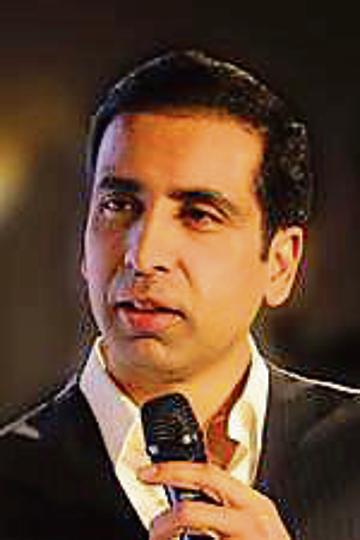Home / Pune News / Startup Saturday: Three ways to skin a balance sheet… Can all be right?
Softbank’s Vision Fund is the best example. After the WeWork debacle the multi-billion dollar Vision Fund, which delivered cash to startups like popcorn at a movie stall, Softbank has withdrawn from at least startup investments.
It’s Indian ventures, PayTM and Flipkart, among the many, have not yet felt any blowback, but if the biggest, at least in terms of media attention, of VCs has hit the brakes, it is time to ask, what is the best way forward for a startie in 2020? Best way forward in terms of raising funds, that is. Namita Shibad meets three startups, who each took a different route to fund raising. Here is the view from their balance sheets
LetsTrack, set up in 2016
Seed round $1.7 million in Dec 2017
Looking to raise $7-8 million
20% market share
6 lakh customers
2019 revenues – Rs 21 crore
Vikram Kumar, founder

Vikram Kumar ( HT PHOTO )
LetsTrack tracks anything that moves – car, ship, plane, people or pets. When we started LetsTrack, we put in Rs 10 lakh of our own money. This went into developing the hardware and software. But, the company needed to grow. We had to expand to Tier 2 and 3 cities, to strengthen our distribution system. We also needed money to make further improvements on our product.
Post the initial round of funding of $1.7 million, we were very clear that we did not want to just take money. We wanted to get someone on board who would also be involved in our company. Who could give us more than just money. That person was James Arthur from the UK who sold his own company and invested in Lets Track.
James is our COO and he is actively involved in our day to day work. He’s not just an investor.
No company can sustain without growth and though LetsTrack has been on that path constantly (posting 300% YoY growth) it’s time for a fresh round of funds infusion.
Though we have 3,000 exclusive LetsTrack touch points in the country (shops with exclusive space allocated to LetsTrack); 1,500 channel partners; and a large distribution network, we now need to promote our product, build our brand, do some aggressive marketing.
Look at the market size. All cars, bikes, people who deliver goods/ services are ‘trackable’. People have a negative perception of tracking, but it is something that is happening all the time.”
The Minimalist design firm
Founded in 2015
100 employees in 2019
Expected turnover in 2020 – $2 million
Founders on “30 Under 30” list by Forbes in 2019
Ranked No 8 creative company by LinkedIn in 2019
Founders: Chirag Gander and Sahil Vaidya, both IIT engineers

Chirag Gander. ( HT PHOTO )
While we were in college, Sahil and I wanted to try our hand at design and user experience. We started by making a Facebook page and taking up social issues like menstruation, sanitation and so on. Our design and presentation were such that soon we had big giant companies approaching us to do some work for them.
Coca Cola asked us to work on the brief, Coke For Work, where they wanted people to drink coke instead of coffee at work. MTV USA approached us and so did Mahindra Realty.
We did the creatives, admin, marketing, everything. Our work was such that we could, with the help of some software, deliver to our clients. As work grew we needed more hands on the deck.
We hired 12 entry-level people and even then did all the HR and admin on our own. The steady flow on income from our clients helped us pay for our staff and office.
Though The Minimalist has grown vastly in the past few years and now serves clients from the US, Ireland, Maldives and Australia, we are not looking at raising funds. Till such time you can manage on your own, you should.
Nowadays the trend seems to be to raise big money from VCs; it is considered sexy; you are on the news and people want to know about you. That in itself is seen as success. The real success story is when you have paying customers and when that number is growing; when your revenues are growing and you are posting profits.
In my opinion two things happen when a startup gets funded by a VC. Psychologically you tend to splurge. And the investor obviously will have a say in your business. You are then more like an employee rather than the owner of your business, because you have to deliver results to the investor. It works for some. VCs can take your company to the next level, but we so far are manging very well on our own.
Square Off, AI and robotics- powered chess board
Started with college grant of Rs 50,000 in 2014
Last raised Rs 4.5 crore from Kickstarter.
4,000 preorders
Founders: Atur Mehta and Bhavya Gohil

Atur Mehta ( HT PHOTO )
While at college, Bhavya and I did a project where we developed an AI and robotics-powdered chess board. We got the opportunity to present this at an IIT event and it generated immense interest. When we completed our engineering course in 2015, we decided to take our chess board forward and registered our company.”
The business demanded further money. We put in more elements that could built it and needed funds to develop it. We thought why not use crowdsourcing for our fund requirements.
The logic behind this was simple. Platforms like Kickstarter are heavily populated by people who are tech enthusiasts. They appreciate new technologies and are willing to bet on it. If a tech startup wants to raise funds, crowdfunding is the best way in the early days, because not only do you raise the funds, but it can also be a testing ground for your product.
Kickstarter had some rules. They have not expanded their services to India yet. We tied up with a friend from the UK and took his help to do the fundraising. I think we put up a lot of user testimonials. At the various international events where we had showcased Square Off we videoed the people who used our chess board and their reactions. It was as real a user response as you could get; plus the fact that it brought to the table a whole new way to play chess.”
We got very valuable feedback and with that made further changes in the original chessboard.
We will use the money raised for product development and manufacturing in China, where we have been producing our chess boards. Crowdsourcing is an important tool to get started, but when you want to rapidly expand to multiple markets it is VC funding that is needed.




